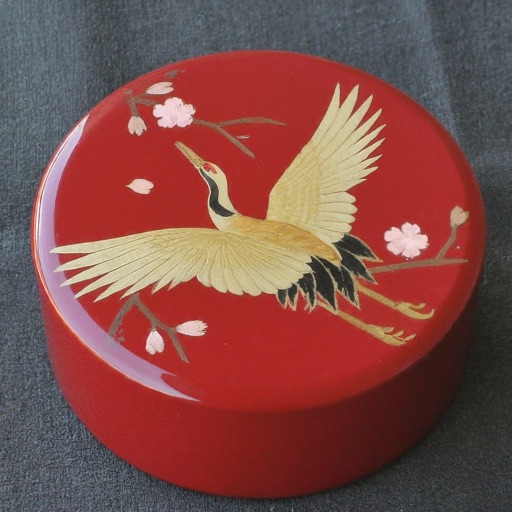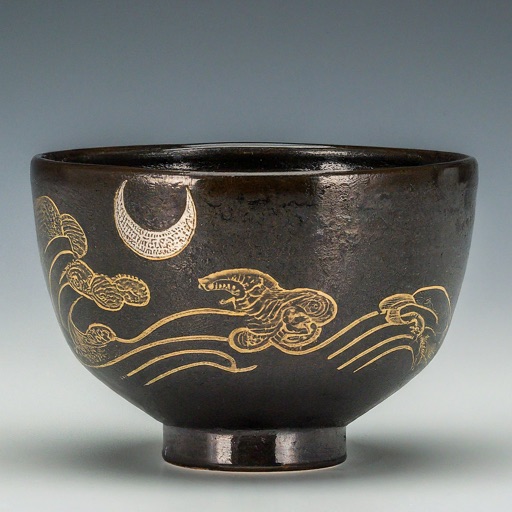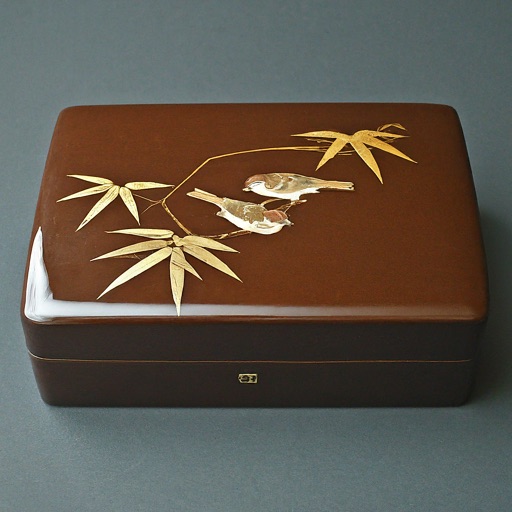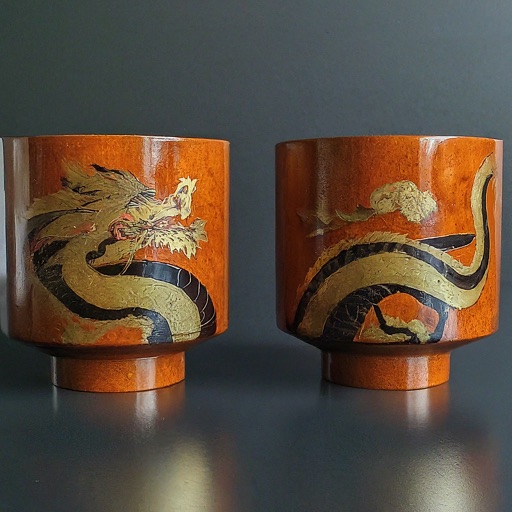Lacquerware, or “urushi” in Japanese, is an art form deeply rooted in Japanese culture. Crafted from the sap of the lacquer tree to create beautiful and functional objects, its origins date back over 9,000 years!
Creating lacquerware requires patience and precision. The urushi is applied in multiple layers onto different materials such as wood, metal, or even textile. Each layer is dried and polished to achieve the desired depth and finish. Some pieces can require over a hundred layers of lacquer, a colossal amount of work.
In addition to their beauty, elegance, and refinement, Japanese lacquerware also has a practical and symbolic aspect. Historically, they were valued for their durability and resistance to time and elements, making them a major asset for daily use.
Over time, lacquerware also became a canvas for artistic expression. Many are the techniques and artisans dedicated to lacquerware. The most well-known techniques are “maki-e”, where lacquer is inlaid with gold or silver powder, and “raden”, inlaying mother-of-pearl, creating intricate designs and patterns of unparalleled splendor.
Although Japan is immersed in an era of modernism, the art of lacquerware still persists. Artisans, such as those in the village of Kiso, nestled in the mountains of Nagano Prefecture and on the Nakasendo Trail, a historic route that was once a vital artery of ancient Japan, meticulously preserve its traditional techniques.
Born from this rich heritage, Japanese lacquerware continues to be admired worldwide for its timeless beauty, unparalleled craftsmanship, and profound cultural significance.
FAQ on Japanese Lacquerware
- What are the different types of objects that can be made with Japanese lacquerware?
In addition to the bowls and boxes mentioned in the article, Japanese lacquerware can be used to create a wide variety of objects, such as:
- Tableware (plates, cups, cutlery)
- Decorative objects (vases, statues, figurines)
- Furniture (tables, chairs, screens)
- Jewelry (pendants, necklaces, rings)
- Musical instruments (shamisen, koto)
- Weapons and armor (swords, katanas)
- Ceremonial objects (teapots, teacups)
2. How is the sap of the lacquer tree transformed into urushi?
The sap of the lacquer tree is harvested by making incisions in the bark. It is then filtered and purified to remove impurities. The resulting liquid is then dried and fermented for several months, which gives it its unique properties of resistance and durability.
- What are the most common decoration techniques used for Japanese lacquerware?
In addition to maki-e and raden mentioned in the article, here are some other important decoration techniques:
- Hiramaki-e: maki-e technique where gold or silver lacquer is applied in a flat pattern.
- Togidashi-maki-e: maki-e technique where the lacquer is applied in several layers, then polished to bring out the pattern.
- Nashiji: technique that uses mother-of-pearl powder to create a shimmering effect.
- Aka-e: technique that uses red lacquer to create decorative patterns.
- Shunkei-nuri: technique that uses multiple layers of lacquer in different colors to create a depth effect.
- What is the impact of the modern era on the art of Japanese lacquerware?
The art of Japanese lacquerware experienced a decline in the 20th century, but it has seen a resurgence of interest in recent years. Many young artisans are appropriating traditional techniques and incorporating them into contemporary designs.
- Where can you buy authentic Japanese lacquerware?
It is possible to buy authentic Japanese lacquerware in the following places:
- In Japan, in specialized shops and department stores.
- In art galleries and craft shops abroad.
- Online, on specialized websites.
- Are there any museums or exhibitions dedicated to Japanese lacquerware?
Yes, there are several museums and exhibitions dedicated to Japanese lacquerware, including:
- The Urushi Lacquerware Art Museum (Tokyo)
- The Nagano Prefectural Art Museum (Nagano)
- The Kanazawa City Art Museum (Kanazawa)
- How is Japanese lacquerware perceived in contemporary Japanese culture?
Japanese lacquerware is still considered a precious and refined art in contemporary Japanese culture. It is often used to create luxury items and diplomatic gifts.




